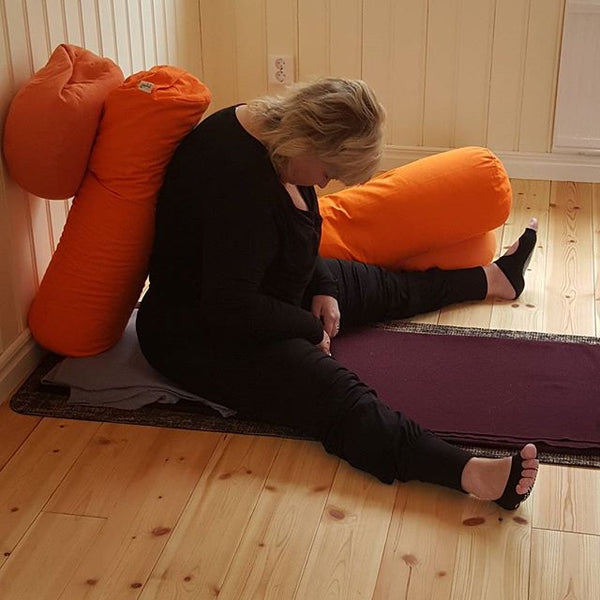Yoga Nidra - Everything You Wanted to Know About Yogic Sleep
Have you ever heard about Yoga Nidra, i.e. Yogic Sleep? No, it's not Savasana exactly. It's better. Surely nothing is better than Savasana, we hear you say! Oh, but there is... We spoke with the lovely Deepti Sastry, a Yoga Teacher based in London, to bring you everything you need to know about this wonderful practice.
What is Yoga Nidra?
Yoga Nidra (affectionately translated as yogic sleep) comes in many forms and guises, and used to be a structural practice that involves many steps and stages. In recent years, many traditions started to incorporate its different forms and elements of in their practices, such as therapeutic and restorative techniques, e.g Irest (Integrative Restoration). So what exactly is Yoga Nidra? Yoga Nidra is a form of meditation that is primarily done lying in Savasana (Corpse Pose)."In Yoga Nidra, the body sleeps, the mind rests and the consciousness is awake."While the practice offers restoration and rest, the aspiration of the practice is much greater. The goal of yoga nidra is to tap into deeper layers of the mind and explore the subconscious in a way that is meaningful for how you relate to the world in your waking life. For example, you explore what can be uncomfortable emotions in a safe space, which you then have the potential to tackle in a more calm, considered way when awake.
Yoga Nidra History
https://instagram.com/p/BBX85w_BBJE/?tagged=yoganidra A very well established traditional form of Yoga Nidra comes from the Satyananda tradition (the Bihar School of Yoga). Swami Satyananda whilst living with his guru, Sivananda Saraswati, began studying the tantric scriptures and came up with this relaxation system. There are many stories about how the practice came about, including how Swami Satyananda was working in the Sivananda ashram and woke every morning with chanting in his head despite not being taught chanting. He came to the realisation that as he slept, a part of his mind was awake and listening to the chanting class taking place next door, and he decided to explore this oddity through what has now become the Satyananda yoga practice. This form of the practice draws from the Tantra tradition, specifically on the nyasa technique of placing the mind’s attention on various parts of the body. The practice has been reworked for a more diverse audience. For instance, traditionally the nyasa technique would have been to pay attention to different parts of the body by using Sanskrit mantras for each body part. As this was rather complicated, Swami Satyananda simplified it to now mean simply drawing attention to a body part as part of a body awareness process in the practice. Yoga Nidra has increasingly become more popular and is now being included more regularly in mainstream yoga studios and in the number of yoga teacher trainings being advertised.5 Main Yoga Nidra Benefits
https://instagram.com/p/BBYH-bBLp8T/?tagged=yoganidra Primarily, Yoga Nidra is a meditation technique. However, it offers many therapeutic benefits as well.- Great for insomniacs – can be used specifically to induce sleep.
- Reduces stress and anxiety, and the deployment of the parasympathetic nervous system so the system is less likely to be overloaded with adrenalin.
- Incredible for nurturing and fulfilling your latent potential – a key element of the practice includes setting a positive resolution/directive, called the Sankalpa. This directive is sent from the conscious to the subconscious mind so it serves as a form of autosuggestion. The Sankalpa offers the potential to transform ones way of thinking and personality towards leading a more positive, fulfilling life.
- A less daunting way to practice meditation – the consistent instructions in the practice are intentional and offer the practitioner a way to stay focused and present, which all forms of meditation practice facilitate.
- Removes tiredness and fatigue. By gradually and consistently bringing relaxation to the body and the mind, Yoga Nidra is said to offer the same relaxation value as 8 hours of sleep. "This is a big claim to make," Deepti tells us, "but I can tell you with complete certainty that this is true for me. I survived on 2-3 hours of sleep for close to 6 months when I was working full-time and finishing my PhD – only because of Yoga Nidra."
How Often Should Yoga Nidra Sleep Be Practised?
https://instagram.com/p/BBWzvtumvLS/?tagged=yoganidra Yoga Nidra can be practiced as often as one would like, even 1-2 times a day. However, if the practitioner finds that they are encountering difficult feelings then it is best to seek the guidance of a qualified teacher and reduce the frequency of the practice, or you can try various yoga poses to help ease you into a more relaxed state before bedtime. To really get a sense of the true potential of the practice it is helpful to start by doing it every single day for at least 3 months and then reflect on your experience to decide on frequency going forward.Yoga Nidra Controversies - Facing Your Own Inner Demons
https://instagram.com/p/BBVi7-yEL-q/?tagged=yoganidra via johnvosler.com Like any meditation practice, you may encounter difficulties arising from simply allowing the subconscious to become explicit, so treat it as you would any form of meditation and seek help from a teacher if you are struggling. It's a matter of fighting with our own inner demons. Remember, you always have control over how deep you want to go in this practice so take ownership.Yoga Nidra Position
https://instagram.com/p/BBV_a-ywfdy/?tagged=yoganidra Ideally you want to do the practice in Savasana, but the most important thing is for the body to be comfortable enough to remain still for at least 30 minutes. This means you can do it lying on your side (recovery position), or you can even be seated, leaning against a wall. Above all, make sure you can breathe comfortably.What is the difference between Yoga Nidra and Savasana?
https://instagram.com/p/BBWbQVaRQQr/?tagged=yoganidra You might encounter a longer Savasana that draws on elements of a traditional Yoga Nidra practice. However, Savasana is fundamentally an asana (yoga pose), a physical posture that is an essential part of an asana practice. It is placed at the end of an asana class to help the nervous system settle after vigorous movement and to offer space for peace and calm at the end of a class. Yoga Nidra is, fundamentally, a meditation practice. It is guided, structured, and methodical in its process of meditation. The two often seem the same but the purpose is different.How do I start?
https://instagram.com/p/BBVrNNBjRZ2/?tagged=yoganidra The best way to start getting into Yoga Nidra is to go to an open class where a real life teacher offers the practice because you are likely to have questions and the teacher is there to answer them. If you don’t have access to a teacher, then the next best thing is to get a recording and stick with it at least for 6 months of regular practice.Best Books for Yoga Nidra
Here are a selection of books which are worth picking up if you want to know more about this deep and relaxing practice.1. Yoga Nidra by Swami Satyananda Saraswati
 $17.69 via Amazon US
$17.69 via Amazon US2. Yoga Nidra, A Meditative Practice for Deep Relaxation and Healing (book and CD) by Richard Miller
 $13.45 via Amazon US
$13.45 via Amazon US3. Yoga Nidra for Complete Relaxation and Stress Relief (including downloadable audio meditation recording) by Julie Lusk
(including downloadable audio meditation recording) by Julie Lusk
 $14.70 via Amazon US
$14.70 via Amazon USFree Youtube Videos and Recordings
If you are as excited as we are to start the Yoga Nidra journey, you'll be ready to go with these videos and audio recordings.1. Yoga Nidra for insomnia and deep sleep
2. 40-minute Yoga Nidra for heart space integration
3. Yoga Nidra for inner peace and tranquility
4. Yoga Nidra to manifest your heart's desire
Deepti also recommends the Beginner (Level 1) CDs from the Satyananda school by Swami Niranjananda and Swami Pragyamurti.Other Yoga Nidra Resources
https://instagram.com/p/BBUj6u3rYCt/?tagged=yoganidra The Yoga Nidra Network is a free resource chock-full of everything Yoga Nidra, including courses, online courses, events, where to find Yoga Nidra classes near you - either free, community or one on one. Satyananda school, where it all started, is also a great information point and have a short training course on Yoda Nidra if you want to take it even further. The Irest website has some great resources too such as trainings, retreats and webinar recordings. Yoga Nidra - It does what it says on the tin and more... Practitioner beware!About Deepti Sastry
 Deepti Sastry has extensive training in the Yoga Sutras (in the Krishnamacharya tradition in India) and is currently training to be a healing chanting teacher (teaching chanting for asana, pranayama and meditation) in the Krishnamacharya tradition. She is also a course leader with a Yoga Sutras specialism with Yoga London for the philosophy module, and teaches private lessons offering longer-term support to students, which includes philosophy and chanting. To learn more about Deepti, visit her website, yogawithdeepti.co.uk.
Deepti Sastry has extensive training in the Yoga Sutras (in the Krishnamacharya tradition in India) and is currently training to be a healing chanting teacher (teaching chanting for asana, pranayama and meditation) in the Krishnamacharya tradition. She is also a course leader with a Yoga Sutras specialism with Yoga London for the philosophy module, and teaches private lessons offering longer-term support to students, which includes philosophy and chanting. To learn more about Deepti, visit her website, yogawithdeepti.co.uk.



